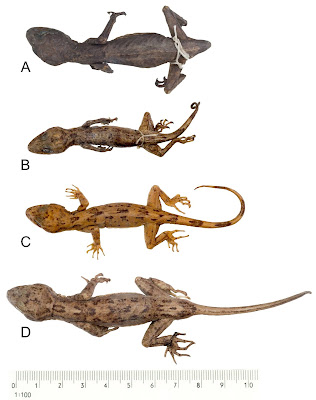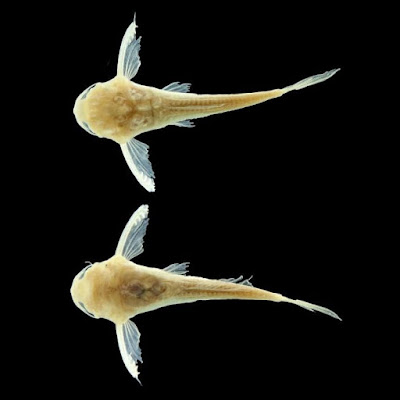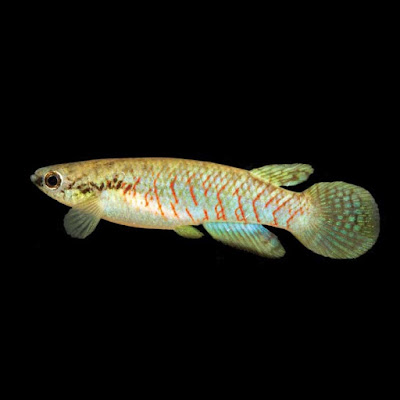[Most Recent Entries] [Calendar View]
Tuesday, January 3rd, 2017
| Time | Event | ||
| 4:13a | [Herpetology • 2016] Redescription of Cyrtodactylus fumosus (Müller, 1895) (Squamata: Gekkonidae), with A Revised Identification Key to the Bent-toed Geckos of Sulawesi
Abstract The binominal Cyrtodactylus fumosus has frequently been used for populations of bent-toed geckos occurring on some Indonesian islands, including Java, Bali, Sulawesi, and Halmahera. Unfortunately, incorrect usage of this name for different geographic lineages has resulted in confusion about the true identity of C. fumosus. Examination of the type specimen and additional specimens from Rurukan and Mount Masarang, North Sulawesi Province, Indonesia, revealed that this population is distinct from other forms heretofore called ‘fumosus’ by a combination of unique morphological characters. In order to stabilize the taxonomy of C. fumosus sensu stricto, and to prevent further confusion, we provide a comprehensive redescription of this species, whose distribution we herein restrict to North Sulawesi. Cyrtodactylus fumosus is one of the most distinctive species among the six bent-toed geckos recorded from Sulawesi, and it differs from Sulawesi congeners by the presence of (1) precloacofemoral scales, including three pore-bearing scales on each thigh, separated from 10 or 11 pore-bearing scales in the precloacal region by 9-11 interscales in males, (2) a precloacal groove in adult males, (3) flat dorsal tubercles in 4-7 irregularly arranged longitudinal rows at midbody, and (4) a distinct lateral fold lacking tubercles. We also provide a revised identification key to the bent-toed gecko species of Sulawesi. Keywords. Cyrtodactylus fumosus, Cyrtodactylus marmoratus, Lacertilia, bent-toed geckos, reptiles, North Sulawesi, Indonesia, morphology. Sven Mecke, Lukas Hartmann, Felix Mader, Max Kieckbusch and Hinrich Kaiser. 2016. Redescription of Cyrtodactylus fumosus (Müller, 1895) (Reptilia: Squamata: Gekkonidae), with A Revised Identification Key to the Bent-toed Geckos of Sulawesi. Acta Herpetologica. 11(2); 151-160. DOI: 10.13128/Acta_Herpetol-17874 ResearchGate.net/publication/311983402_R | ||
| 7:15a | [Ichthyology • 2016] Micromyzon orinoco • A New Species of the Blind and Miniature Genus Micromyzon Friel and Lundberg, 1996 (Siluriformes: Aspredinidae) from the Orinoco River: Describing Catfish Diversity Using High-Resolution Computed Tomography
ABSTRACT A new species of the aspredinid catfish tribe Hoplomyzontini Micromyzon is described from two specimens collected with trawl nets in two localities, at 10 and 18 m depth, in the main channel of the lower Orinoco River in Venezuela almost 40 years ago. The new species is distinguished from its only congener, Micromyzon akamai, by the: straight anterior margin of the mesethmoid; open posterior cranial fontanel; ossified first pectoral-fin radial; single tubular infraorbital bone; infraorbital sensory canal entering neurocranium via the frontal; enclosed foramen for the abductor superficialis muscle in the coracoid; higher vertebral count (33 vs. 28–32); higher anal-fin ray count (10 or 11 vs. 7–9); and some morphometric features. The holotype of the new species was scanned using High-Resolution X-ray Computed Tomography to illustrate, describe, and compare its bony skeleton to other hoplomyzontins. Keywords: Anophthalmic, Miniaturization, Neotropical, River Channels, Taxonomy Tiago P. Carvalho, John G. Lundberg, Jonathan N. Baskin, John P. Friel and Roberto E. Reis. 2016. A New Species of the Blind and Miniature Genus Micromyzon Friel and Lundberg, 1996 (Siluriformes: Aspredinidae) from the Orinoco River: Describing Catfish Diversity Using High-Resolution Computed Tomography. Proceedings of the Academy of Natural Sciences of Philadelphia. 165(1); 37-53. DOI: 10.1635/053.165.0104 RESUMEN: Una nueva especie de Hoplomyzontini Micromyzon se describe a partir de dos muestras colectadas con redes de arrastre en dos localidades, entre 10 y 18 metros de profundidad, en el canal principal de la parte baja del Río Orinoco, en Venezuela hace casi 40 años. La nueva especie se diagnostica de su único congénere, Micromyzon akamai, por la margen anterior recta del mesetemoide; parte posterior de la fontanela craneal abierta; el primer radial de la aleta pectoral osificado, un solo hueso infraorbital tubular; el canal sensorial infraorbital entra al neurocráneo a través del frontal; un foramen cerrado para el musculo abductor superficialis en el e coracoide; mayor número de vértebras (33 vs. 28–32) y del número de radios anales (10 o 11 vs. 7–9); además de algunas características morfométricas. El holotipo de la nueva especie fue escaneado en alta resolución utilizando Tomografía Computarizada de Radio-X de Alta Resolución, y se describe su osteología y se compara con otros Hoplomyzontini. | ||
| 9:20a | [Ichthyology • 2016] Melanorivulus polychromus • A New Species of Killifish (Cyprinodontiformes: Rivulidae) from the rio São José dos Dourados Drainage, middle rio Paraná Basin, southwestern Brazil, with A Redescription of Melanorivulus apiamici
Abstract A new species of Melanorivulus is described from the middle rio Paraná basin, São Paulo state, Brazil. Melanorivulus polychromus, new species, is found in a tributary of the left bank of the rio Paraná basin, the rio São José dos Dourados. It differs from all congeners by the combination of a metallic green to light green ground colour in males, with 6-8 oblique red bars forming chevronlike rows, the chevron tips along the midline of the body pointing toward the head, and irregular narrow red lines and incomplete red bars along the lower half of the body. Melanorivulus apiamici, also endemic from the middle rio Paraná basin, is redescribed. Nielsen, D.T.B., Neves, P.A.B.A., Ywamoto, E.V. and de Aguiar Passos, M. 2016. Melanorivulus polychromus, A New Species of Killifish from the rio São José dos Dourados Drainage, middle rio Paraná Basin, southwestern Brazil, with A Redescription of Melanorivulus apiamici (Cyprinodontiformes: Rivulidae). aqua, International Journal of Ichthyology. 22(2); 79-88. |
| << Previous Day |
2017/01/03 [Calendar] |
Next Day >> |






